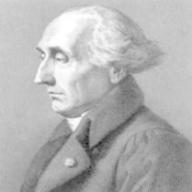electromagnetic induction
2012-02-21 2:56 am
圖片參考:http://imgcld.yimg.com/8/n/HA00414085/o/701202200070213873439090.jpg
The answer is option C.
As I recall that the magnetic field is a vector and thus the magnetic flux is also a vector. I would like to ask why the magnetic flux produced by the emf induced in L1 will not cancel out the flux produced by the solenoid at the plane coaxial to L2 so that an emf of approximately 0V will be induced in L2.
回答 (1)
2012-02-21 10:40 pm
✔ 最佳答案
The induced emf, and induced current, in L1 is generally much lower than the current applied to the solenoid (remember that induced emf is proportional to the rate of change of the applied current) .Therefore, the magnetic flux density produced by L1 would be much weaker than the magnetic flux generated by the applied current. The "flux cancelation" effect could normally be neglected.
收錄日期: 2021-04-29 17:52:32
原文連結 [永久失效]:
https://hk.answers.yahoo.com/question/index?qid=20120220000051KK00702

